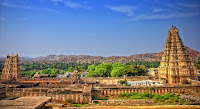Tourism is a very attractive method of education for school children. We offer a number of destinations for exciting school tours, including for those who are about to complete their schooling. We offer several sample itineraries for every kind of school travel. We fully customize every tour you choose, creating an experience that’s truly once-in-a-lifetime.
Educational Tours for different groups of students are planned with unique specifications. Educational Tours India realizes that students belonging to different subjects and backgrounds have different interests and requirements. Though the tour itinerary is planned and decided by the tourist groups, we try to infuse every itinerary with some added activities, keeping in mind the basic differences and interests of the group.
Examples of added activities
School children may be of different age-group ranging from a small child in the Nursery Classes to the students in their final year of schooling. Special care is needed to be taken while planning for such variety of age group children. The needs, the interests and understanding level of these children are different at different age and stage. Hence Educational Tours India discuss their tour plan with the Teachers of the school involved and thereafter prepare the itinerary, keeping in mind all these small-minute considerations.
When the tour schedule is finalized by the tourist group, we offer to include numerous extra activities to make their journey more memorable. However all such activities are subject to availability time in the schedule and choice by the group involved. Few examples of added activities for school students are listed below
Educational Tours for different groups of students are planned with unique specifications. Educational Tours India realizes that students belonging to different subjects and backgrounds have different interests and requirements. Though the tour itinerary is planned and decided by the tourist groups, we try to infuse every itinerary with some added activities, keeping in mind the basic differences and interests of the group.
Examples of added activities
School children may be of different age-group ranging from a small child in the Nursery Classes to the students in their final year of schooling. Special care is needed to be taken while planning for such variety of age group children. The needs, the interests and understanding level of these children are different at different age and stage. Hence Educational Tours India discuss their tour plan with the Teachers of the school involved and thereafter prepare the itinerary, keeping in mind all these small-minute considerations.
When the tour schedule is finalized by the tourist group, we offer to include numerous extra activities to make their journey more memorable. However all such activities are subject to availability time in the schedule and choice by the group involved. Few examples of added activities for school students are listed below






